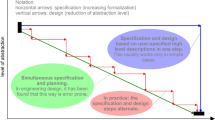Abstract
A basic requirement which needs to be fulfilled by railway traffic control systems is to ensure a high level of safety. That is why, CENELEC (European Committee for Electrotechnical Standardization) norms include RAMS (Reliability, Availability, Maintainability, Safety) requirements for these systems. The process of designing, building and approving for exploitation the railway traffic control systems is finished with the assessment of correctness of each of the stages. Verification and validation of a railway traffic control system is a complicated process which requires a necessary experience by the people participating in this process. That is why it is rational to use a custom software, called the expert system. The authors of this article, on the basis of the Exsys Corvid environment, have built an expert system for the verification and validation of level crossing protection systems. The conducted research has proven both a great usefulness of this technology and, at the same time, the need to broaden the research on other kinds of railway traffic control systems.
Access this chapter
Tax calculation will be finalised at checkout
Purchases are for personal use only
Similar content being viewed by others
References
Kornaszewski, M., Bojarczak, P., Pniewski, R.: Introduction of world innovative technologies to railway transport in Poland. In: Proceedings of the 16th International Scientific Conference Globalization and Its Socio-Economic Consequences, Part II, pp. 962–969 (2016)
Nowakowski, W., Łukasik, Z., Bojarczak, P.: Technical safety in the process of globalization. In: Proceedings of the 16th International Scientific Conference Globalization and Its Socio-Economic Consequences, Part IV, pp. 1571–1578 (2016)
Lewiński, A., Perzyński, T.: The Reliability and safety of railway control systems based on new information technologies. In: Mikulski, J. (ed.) TST 2010. CCIS, vol. 104, pp. 427–433. Springer, Heidelberg (2010). https://doi.org/10.1007/978-3-642-16472-9_47
Alibaba, H.Z., Ozdeniz, M.B.: A building elements selection system for architects. Build. Environ. 39(3), 307–316 (2004)
Darvasi, D., Badescu, A., Dobritoiu, C., et al.: Accounting software using expert systems. In: 5th WSEAS International Conference on Business Administration (ICBA 2011), Puerto Morelos, Mexico, 2011, Recent Advances in Business Administration, pp. 97–102 (2011)
Fairuz, A.M., Sapuan, S.M., Zainudin, E.S.: Prototype expert system for material selection of polymeric-based composites for fishing boat components. J. Food Agric. Environ. 10(3–4), 1543–1549 (2012)
Ionita, L., Ionita, I.: Expert-GOSP-expert system for three-phase separator diagnosis. Stud. Inf. Control 24(3), 293–300 (2015)
Moise, M., Zingale, M.: Developing an expert system for invention patent examination. In: 20th International Danube-Adria-Association-for-Automation-and-Manufacturing Symposium, Vienna, Austria, 2009. Annals of DAAAM for 2009 & Proceedings of the 20th International DAAAM Symposium, vol. 20, pp. 1447–1448 (2009)
Jackson, P.: Introduction to Expert Systems. Addison-Wesley, England (1999)
Darlington, K.: The Essence of Expert Systems. Prentice-Hall, Imprint of Pearson Education, England (2000)
Giarratano, J.C.: Expert Systems: Principles and Programming, 4th edn. Thomson Learning, Singapore (2005)
Hauer, I., Butuza, A.: Competence and competitiveness with Exsys Corvid Expert System 5.2.1. In: 2nd Review of Management and Economic Engineering Management Conference (RMEE), Cluj Napoca, Romania, 2011. Review of Management and Economic Engineering International Management Conference, pp. 118–123 (2011)
Exsys Inc.: Exsys Corvid Knowledge Automation Expert System Development Manual. USA (2010)
Exsys Inc.: Exsys Corvid Advanced Tutorial. USA (2007)
Bester, L., Toruń, A.: Modeling of reliability and safety at level crossing including in polish railway conditions. In: Mikulski, J. (ed.) TST 2014. CCIS, vol. 471, pp. 38–47. Springer, Heidelberg (2014). https://doi.org/10.1007/978-3-662-45317-9_5
Łukasik, Z., Ciszewski, T., Młyńczak, J., Nowakowski, W., Wojciechowski, J.: Assessment of the safety of microprocessor-based semi-automatic block signalling system. In: Macioszek, E., Sierpiński, G. (eds.) Contemporary Challenges of Transport Systems and Traffic Engineering. LNNS, vol. 2, pp. 137–144. Springer, Cham (2017). https://doi.org/10.1007/978-3-319-43985-3_12
Acknowledgments
This material is based upon work supported by National Centre for Research and Development under Grant No. PBS3/A6/29/2015 entitled „The system for maintenance data acquisition and analysis of reliability and safety of traffic control systems”.
Author information
Authors and Affiliations
Corresponding author
Editor information
Editors and Affiliations
Rights and permissions
Copyright information
© 2018 ICST Institute for Computer Sciences, Social Informatics and Telecommunications Engineering
About this paper
Cite this paper
Nowakowski, W., Bojarczak, P., Łukasik, Z. (2018). Verification and Validation of Railway Control Systems Using an Expert System. In: Kováčiková, T., Buzna, Ľ., Pourhashem, G., Lugano, G., Cornet, Y., Lugano, N. (eds) Intelligent Transport Systems – From Research and Development to the Market Uptake. INTSYS 2017. Lecture Notes of the Institute for Computer Sciences, Social Informatics and Telecommunications Engineering, vol 222. Springer, Cham. https://doi.org/10.1007/978-3-319-93710-6_5
Download citation
DOI: https://doi.org/10.1007/978-3-319-93710-6_5
Published:
Publisher Name: Springer, Cham
Print ISBN: 978-3-319-93709-0
Online ISBN: 978-3-319-93710-6
eBook Packages: Computer ScienceComputer Science (R0)




